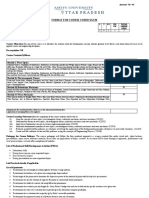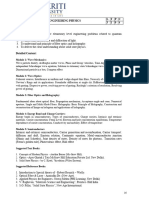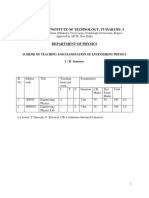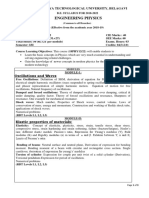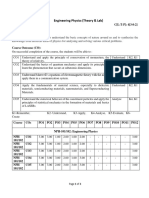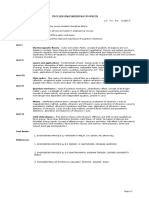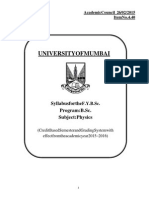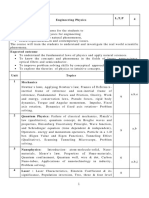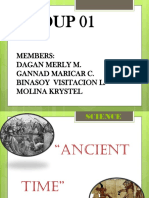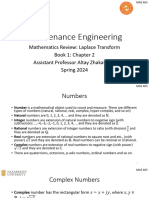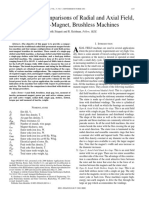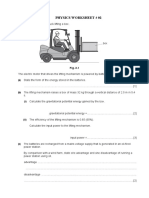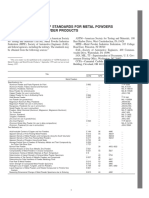0% found this document useful (0 votes)
33 views5 pagesNewSyllabus Afe8c80e 042d 4cd7 A070 1b97a0da5b4b
The Engineering Physics course (PHYS219) aims to provide foundational knowledge in wave optics, electromagnetism, relativity, and quantum mechanics, along with practical experimental skills. It includes a syllabus covering electromagnetic theory, mechanics, quantum mechanics, and optics, with a total of 4 credit units. Students will engage in various assessments and practical experiments to enhance their understanding and application of physical principles.
Uploaded by
bawin17186Copyright
© © All Rights Reserved
We take content rights seriously. If you suspect this is your content, claim it here.
Available Formats
Download as PDF, TXT or read online on Scribd
0% found this document useful (0 votes)
33 views5 pagesNewSyllabus Afe8c80e 042d 4cd7 A070 1b97a0da5b4b
The Engineering Physics course (PHYS219) aims to provide foundational knowledge in wave optics, electromagnetism, relativity, and quantum mechanics, along with practical experimental skills. It includes a syllabus covering electromagnetic theory, mechanics, quantum mechanics, and optics, with a total of 4 credit units. Students will engage in various assessments and practical experiments to enhance their understanding and application of physical principles.
Uploaded by
bawin17186Copyright
© © All Rights Reserved
We take content rights seriously. If you suspect this is your content, claim it here.
Available Formats
Download as PDF, TXT or read online on Scribd
/ 5

